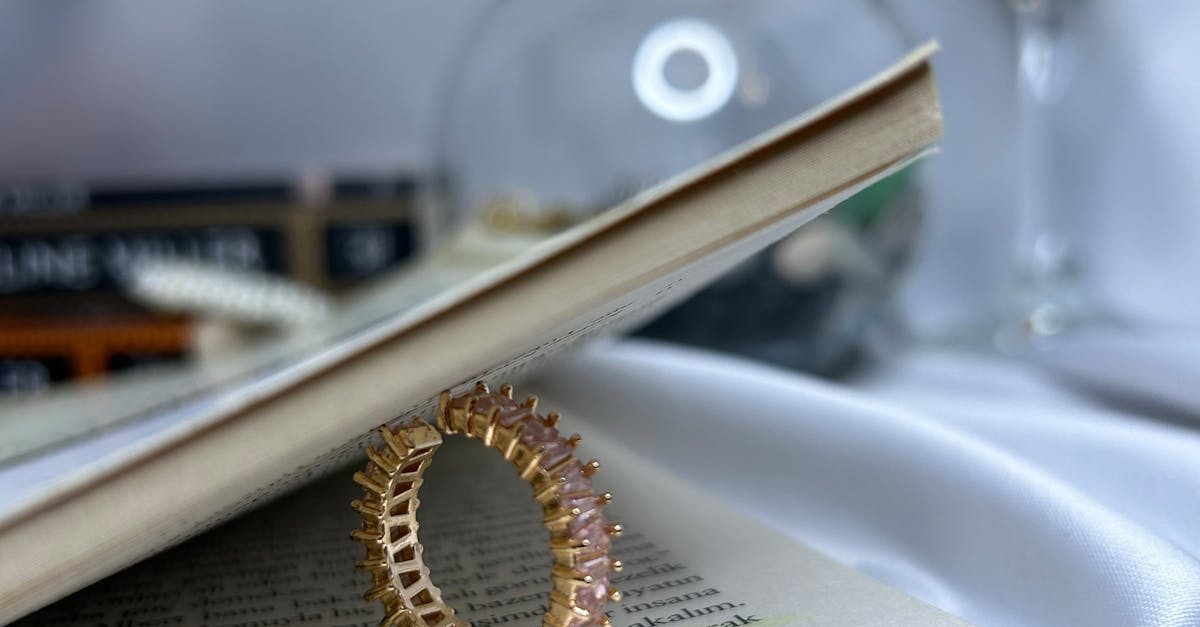The Allure of Gold: Cultural Roots and Economic Winds

A Golden Allure: Exploring the Surge in Gold Jewelry Demand
From time immemorial, gold has held a captivating allure, deeply entwined with our cultural heritage and aspirations. Today, this precious metal is experiencing a resurgence in demand, driven by a confluence of cultural significance, economic prosperity, and a growing desire for ethical and sustainable adornments.
As we delve into the intricacies of this golden resurgence, we will explore the deep-rooted cultural significance of gold, particularly in Asian cultures, where it holds a revered place in traditional ceremonies and auspicious occasions. We will also examine the economic factors fueling this demand, with rising disposable income and increasing affluence in emerging markets like India and China playing a pivotal role.
Moreover, we will shed light on the diverse range of gold jewelry designs that are capturing the hearts of consumers, from classic and timeless pieces to modern and fashion-forward creations. The investment value of gold jewelry will also be explored, as its intrinsic worth provides a sense of security and stability in uncertain economic times.
Key Insights
5 Key Points
- Gold has deep cultural and religious significance, particularly in Asian cultures, making it a cherished adornment for special occasions.
- Rising disposable income, especially in emerging markets like India and China, has increased consumers’ ability to purchase gold jewelry.
- India’s cultural affinity for gold, symbolized by traditional jewelry designs and auspicious occasions, contributes to its significant consumption.
- China’s rapidly expanding middle class and increased fashion consciousness are stimulating demand for gold jewelry as a symbol of wealth and status.
- Consumers are opting for a wide range of gold jewelry designs, from traditional pieces to modern and trendy styles.
1. Cultural Roots of Gold’s Allure
Gold has long held a deep cultural and religious significance, particularly in many Asian cultures. In India, for instance, gold is considered a sacred metal, closely associated with the divine and purity. It plays an integral role in traditional ceremonies such as weddings and religious festivals, where it is believed to bring blessings and prosperity to the participants.
Similarly, in China, gold is seen as a symbol of wealth and good fortune. It is often gifted during special occasions such as the Chinese New Year and is considered an auspicious adornment for brides. The intricate designs and craftsmanship of Chinese gold jewelry reflect the country’s rich cultural heritage and artistic traditions.
Beyond Asia, gold also holds significant cultural value in other parts of the world. In ancient Egypt, gold was associated with the sun god Ra and was believed to possess protective and healing powers. In many African cultures, gold is a symbol of status and prestige, and is often worn by chiefs and other respected members of society.
2. Economic Factors Driving Demand

Economic Factors Driving Demand
Rising disposable income, particularly in emerging markets like India and China, has significantly boosted the demand for gold jewelry. As these economies continue to grow and living standards improve, consumers have more discretionary income to spend on luxury items such as gold jewelry.
In India, for instance, the gold market is closely tied to cultural traditions and festivals, and rising income levels have enabled more people to purchase gold jewelry for these special occasions. Similarly, in China, the rapidly expanding middle class has fueled a growing appetite for gold jewelry as a symbol of wealth and status.
Moreover, the increasing availability of credit and financing options has made it easier for consumers to purchase gold jewelry, even if they do not have the full amount upfront. This has further contributed to the surge in demand for gold jewelry in emerging markets.
3. India: A Gold-Loving Nation
India has a long and deep-rooted affinity for gold, which is deeply ingrained in the country’s cultural traditions and beliefs. Gold is considered an auspicious metal, associated with purity, prosperity, and divinity. It plays a central role in Indian weddings, religious festivals, and other special occasions, where it is gifted and worn as a symbol of good fortune and blessings.
The traditional designs of Indian gold jewelry are as diverse as the country’s rich cultural heritage. From the intricate temple jewelry of South India to the delicate filigree work of Rajasthan, each region has its own unique style and motifs. Gold is also seen as a form of investment in India, and many families purchase gold jewelry as a way to save and build wealth.
The combination of cultural significance, traditional designs, and investment value has contributed to India’s position as the world’s largest consumer of gold jewelry. Gold is deeply ingrained in the fabric of Indian society and continues to hold a special place in the hearts of its people.
4. China’s Growing Appetite for Gold

China’s Growing Appetite for Gold
China’s rapidly expanding middle class and increased fashion consciousness have fueled a growing demand for gold jewelry in the country. The rising affluence of Chinese consumers has enabled them to spend more on luxury goods, and gold jewelry is seen as a symbol of wealth, status, and sophistication.
Moreover, the growing influence of Western fashion trends in China has led to a greater appreciation for gold jewelry as a stylish and fashionable accessory. Chinese consumers are increasingly opting for modern and contemporary gold jewelry designs, in addition to traditional Chinese styles.
The demand for gold jewelry in China is also driven by the country’s cultural heritage, as gold has long been associated with prosperity and good fortune in Chinese tradition. The combination of these factors has made China one of the largest and fastest-growing markets for gold jewelry in the world.
5. Types of Gold Jewelry in Demand
Consumers today are opting for a diverse range of gold jewelry designs, reflecting their individual styles and preferences. Traditional pieces, such as gold necklaces, earrings, and bangles, continue to be popular, especially during weddings and other auspicious occasions. However, modern and trendy gold jewelry designs are also gaining traction, as consumers seek to express their unique personalities through their accessories.
Some of the most popular gold jewelry designs include delicate chains, layered necklaces, geometric shapes, and contemporary pendants. Rose gold and white gold have also become increasingly popular in recent years, offering a more modern and stylish alternative to traditional yellow gold. Consumers are also experimenting with mixed metals, combining gold with other materials such as diamonds, gemstones, and pearls to create unique and eye-catching pieces.
The variety of gold jewelry designs available today ensures that there is something to suit every taste and style. Whether you prefer classic and timeless pieces or modern and trendy designs, you can find the perfect gold jewelry to complement your look and express your individuality.
6. Investment Value of Gold Jewelry
Investment Value of Gold Jewelry
Gold has long been considered a safe haven asset, and its intrinsic value adds to the appeal of gold jewelry as an investment. In times of economic uncertainty or market volatility, the price of gold tends to rise, as investors seek to preserve their wealth. This makes gold jewelry a potentially valuable investment, as it can provide a hedge against inflation and economic downturns.
Moreover, gold jewelry is a tangible asset that can be easily stored and transported. Unlike stocks or bonds, which are subject to market fluctuations and can become worthless in a crisis, gold jewelry retains its intrinsic value even in the worst of economic conditions.
While the price of gold can fluctuate in the short term, over the long term it has consistently appreciated in value. This makes gold jewelry a potential store of value that can help you preserve and grow your wealth over time. However, it is important to remember that gold jewelry is not a liquid asset, and selling it quickly may be difficult in times of need.
7. Sustainability and Ethical Considerations
Sustainability and Ethical Considerations
In today’s increasingly eco-conscious world, consumers are becoming more mindful of the sustainability and ethical practices involved in gold mining and jewelry production. They want to know that the gold they are buying has been mined and produced in a responsible and environmentally friendly way.
Many consumers are opting for recycled gold jewelry, which helps to reduce the environmental impact of gold mining. Recycled gold is gold that has been recovered from old jewelry, electronics, and other sources. It requires less energy and resources to produce than newly mined gold, and it helps to reduce waste.
Consumers are also looking for gold jewelry that has been produced in a socially responsible way. This means that the miners and workers involved in the production process have been treated fairly and paid a living wage. It also means that the mining and production process has not had a negative impact on local communities or the environment.
Is all gold jewelry ethically sourced?
Unfortunately, not all gold jewelry is ethically sourced. Some gold may be mined using harmful practices that damage the environment and exploit workers. However, there are a number of organizations working to promote ethical gold mining and production. Consumers can look for gold jewelry that is certified by one of these organizations to ensure that it has been produced in a responsible way.
Is recycled gold as valuable as newly mined gold?
Yes, recycled gold is just as valuable as newly mined gold. It has the same properties and purity, and it can be used to create beautiful and durable jewelry. In fact, recycled gold is often more environmentally friendly and sustainable than newly mined gold.
How can I care for my gold jewelry?
Gold jewelry is relatively easy to care for. You can clean it with a mild soap and water solution and a soft cloth. Avoid using harsh chemicals or abrasive cleaners, as these can damage the gold. Store your gold jewelry in a cool, dry place away from direct sunlight.
Table of Key Insights
| Key Insight | Description | |—|—| | Cultural Significance | Gold holds deep cultural and religious significance, particularly in Asian cultures, making it a cherished adornment for special occasions. | | Rising Disposable Income | Rising disposable income, especially in emerging markets like India and China, has increased consumers’ ability to purchase gold jewelry. | | India’s Cultural Affinity | India’s cultural affinity for gold, symbolized by traditional jewelry designs and auspicious occasions, contributes to its significant consumption. | | China’s Growing Appetite | China’s rapidly expanding middle class and increased fashion consciousness are stimulating demand for gold jewelry as a symbol of wealth and status. | | Diverse Jewelry Designs | Consumers are opting for a wide range of gold jewelry designs, from traditional pieces to modern and trendy styles. | | Investment Value | Gold’s intrinsic value as a form of investment adds to its appeal, as it can serve as a safe haven during economic uncertainty. | | Sustainability and Ethics | Consumers are becoming more mindful of the sustainability and ethical practices involved in gold mining and jewelry production. |